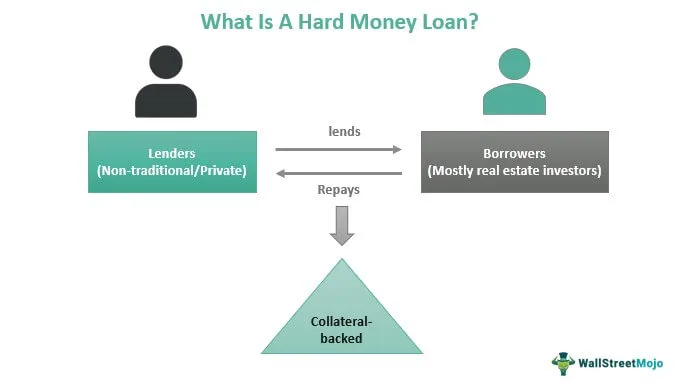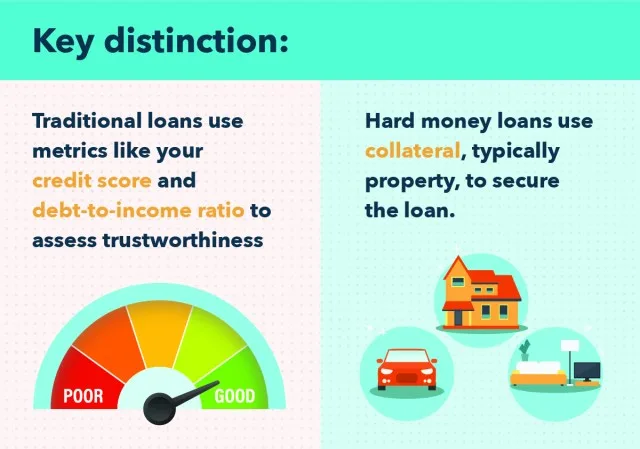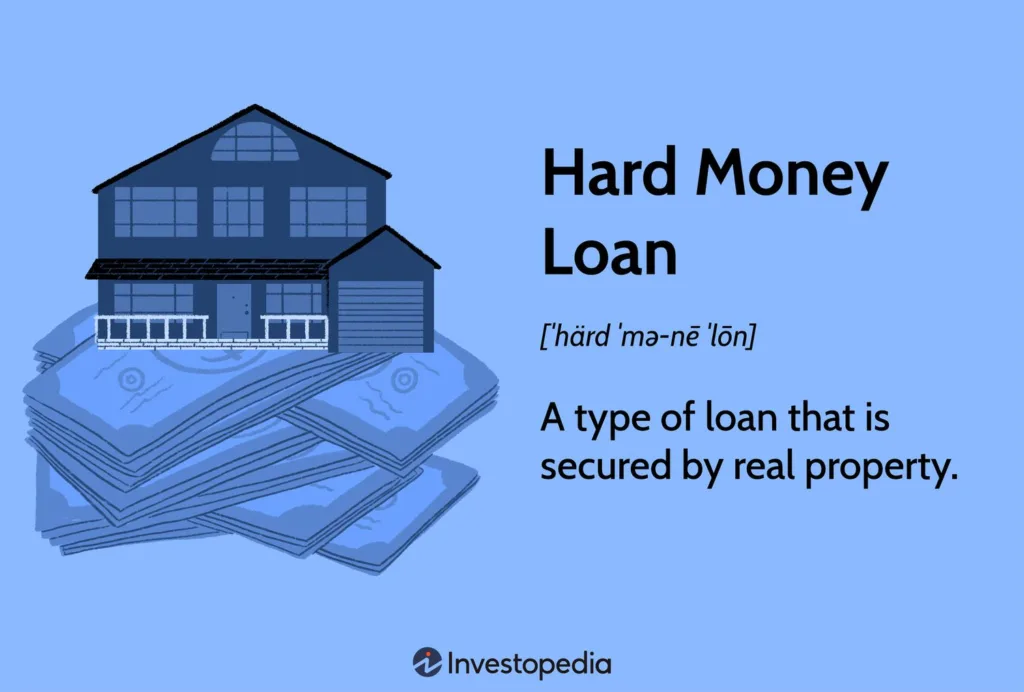Applying for a hard money loan can be a complex and confusing process if you are not familiar with the steps involved. In this article, we will walk you through the typical process for applying for a hard money loan, providing you with a clear understanding of what to expect and how to navigate through each stage. From gathering the necessary documentation to submitting your application and ultimately receiving the funds, we will guide you through the entire journey of acquiring a hard money loan.

Finding a Hard Money Lender
Research Different Hard Money Lenders
When seeking a hard money loan, it is crucial to research and identify different hard money lenders that can meet your specific financing needs. Conduct a thorough search online and in your local area to find reputable lenders with a strong track record in providing hard money loans. Pay attention to factors such as their experience, reputation, and the types of properties they specialize in financing. This research step will help you narrow down your options and choose a lender that is a good fit for your borrowing requirements.
Review Lender’s Credentials and Experience
Once you have identified potential hard money lenders, it is essential to review their credentials and verify their experience in the industry. Look for well-established lenders who have a proven track record of successfully funding and closing hard money loans. Check if they are licensed, registered, and compliant with all relevant regulations. You can also evaluate their reputation by checking if they are members of any professional associations or if they have received any awards or recognition in the industry. Taking the time to review a lender’s credentials will help you ensure that you are dealing with a trustworthy and reputable lender.
Check Lender’s Loan Terms and Conditions
Before proceeding with a specific hard money lender, thoroughly review their loan terms and conditions. Focus on aspects such as interest rates, loan fees, and repayment terms. Assess whether their loan terms align with your financial goals and repayment abilities. Keep in mind that hard money loans usually carry higher interest rates and shorter repayment terms compared to traditional bank loans. Ensure that you are comfortable with the proposed terms and that they make financial sense for your specific situation. If needed, consult with a financial advisor to better understand the implications of the terms and conditions offered by the lender.
Read Customer Reviews and Testimonials
One effective way to gauge the quality and reliability of a hard money lender is by reading customer reviews and testimonials. Look for feedback from borrowers who have previously worked with the lender and pay attention to their experiences, both positive and negative. Online platforms, industry forums, and social media can provide valuable insights into a lender’s reputation and customer service. While it is essential to consider individual reviews in context, a pattern of positive or negative feedback can give you an idea of the lender’s overall performance. Use this information to make an informed decision about whether to proceed with that particular lender.
Preparing Loan Documentation
Gather Personal and Business Information
To proceed with a hard money loan application, you will need to gather personal and business information. This includes your personal identification documents such as a driver’s license or passport, as well as your business registration documents if applicable. Make sure all the information is accurate and up to date.
Compile Financial Statements and Tax Returns
Lenders will require you to submit financial statements and tax returns to assess your financial standing and determine your eligibility for a hard money loan. Compile your personal and business financial statements, including balance sheets, profit and loss statements, and cash flow statements. Additionally, gather your personal and business tax returns for the past few years. Providing complete and accurate financial documentation will help strengthen your loan application.
Prepare a Detailed Property Description
When applying for a hard money loan, it is essential to provide a detailed description of the property you intend to finance. Include relevant information such as the property address, size, condition, and estimated value. Attach any supporting documents or photographs that can help the lender assess the property accurately. A comprehensive property description will not only expedite the loan evaluation process but also demonstrate your preparedness and commitment to the loan application.
Obtain Property Appraisal and Inspection Reports
To support the property description and ensure that the lender has an accurate assessment of the property’s value and condition, obtain professional appraisal and inspection reports. Hire a qualified appraiser to conduct a thorough appraisal of the property and provide an independent valuation. Additionally, have a professional inspector evaluate the property’s condition and identify any potential issues that may affect its value or eligibility for the loan. These reports will provide the lender with valuable information for their evaluation and underwriting process.
Submitting Loan Application
Complete the Loan Application Form
Once you have gathered all the necessary documentation, you can proceed to complete the loan application form provided by the hard money lender. Ensure that you provide accurate and complete information to avoid delays in the evaluation process. Be prepared to provide details about yourself, your business, and the property you intend to finance. If you have any questions or need clarification on any section of the application form, do not hesitate to reach out to the lender for assistance.
Include all Required Supporting Documents
Accompanying the loan application form, you will need to submit all the required supporting documents as outlined by the lender. This includes personal and business identification documents, financial statements, tax returns, and the detailed property description along with appraisal and inspection reports. Verify that you have compiled all the necessary documentation before submitting your loan application.
Submit Application to the Hard Money Lender
Submit your complete loan application package to the hard money lender according to their preferred submission method. This can typically be done online through their secure portal or by mailing the physical documents to their office. Follow the lender’s instructions carefully to ensure that your application is received promptly and efficiently.
Pay any Application or Processing Fees
Some hard money lenders may require you to pay an application fee or processing fee to cover the costs associated with evaluating and processing your loan application. Be prepared to pay these fees, and ensure that you understand the payment methods and deadlines specified by the lender. Always retain a copy of the payment confirmation for your records.
Loan Evaluation and Underwriting
Lender Evaluates the Loan Application
Once the hard money lender receives your loan application, their team will begin evaluating the application and the supporting documentation. They will assess your financial standing, credit history, the property’s value and condition, and your overall eligibility for the loan. This evaluation process may involve several rounds of review and may take some time to complete. Patience is crucial during this stage as the lender aims to make an informed decision based on the information provided.
Review of Borrower’s Credit History
As part of the loan evaluation process, the lender will review your credit history and assess your creditworthiness. While hard money lenders are typically more flexible when it comes to credit scores compared to traditional lenders, a healthy credit history can still increase your chances of loan approval. The lender may consider factors such as your credit score, payment history, and presence of any bankruptcies or foreclosures. If you have a less-than-perfect credit history, be prepared to provide explanations or additional documentation that can demonstrate your ability to repay the loan.
Assessment of Property Value and Condition
A critical aspect of the loan evaluation process is the assessment of the property’s value and condition. The lender will carefully review the appraisal and inspection reports to determine if the property meets their criteria for collateral and loan eligibility. They will consider factors such as location, market trends, comparable property values, and any necessary repairs or renovations. The lender wants to ensure that the property holds sufficient value to justify the loan amount requested.
Verification of Borrower’s Financials
During the loan evaluation and underwriting process, the lender will verify the accuracy and validity of the financial documents you provided. This may involve contacting your financial institutions, accountants, or other relevant parties to verify income, assets, and liabilities. Prepare to provide additional supporting documentation and be responsive to any requests for clarification or further information. The lender’s goal is to ensure that they have a comprehensive and accurate understanding of your financial situation before making a lending decision.

Issuing Loan Offer
Lender Determines Loan Amount and Terms
After completing the evaluation and underwriting process, the hard money lender will determine the loan amount and specify the terms of the loan offer. This includes establishing the interest rate, loan fees, repayment schedule, and any other relevant terms and conditions. The lender’s decision will be based on their assessment of your eligibility, the property’s value, and their own internal lending guidelines. The loan offer will outline all the key details that you need to consider before accepting the loan.
Loan Offer Includes Interest Rate and Fees
The loan offer presented by the lender will clearly specify the interest rate that will be charged on the loan. Hard money loans typically have higher interest rates compared to traditional bank loans due to the increased risk and shorter loan terms involved. Additionally, the loan offer will outline any associated fees such as origination fees, processing fees, and closing costs. Make sure to carefully review the interest rate and fees, as they will impact the overall cost of the loan.
Offered Loan Term and Repayment Schedule
In the loan offer, the lender will specify the term of the loan and provide a repayment schedule. Hard money loans are typically short-term loans, with terms ranging from a few months to a few years. The repayment schedule may include periodic payments or a balloon payment at the end of the term. Carefully review the proposed loan term and repayment schedule to ensure that they align with your financial capabilities and the intended purpose of the loan.
Loan Offer Provided to the Borrower
Once the lender determines the loan amount, interest rate, fees, and repayment terms, they will provide the loan offer to the borrower for review and consideration. The loan offer will be presented in a clear and transparent manner, outlining all the important details of the loan. Take the time to read and understand the loan offer thoroughly. If you have any questions or concerns, do not hesitate to reach out to the lender for clarification before proceeding.
Accepting the Loan Offer
Review and Understand the Loan Offer
When considering the loan offer, take the necessary time to review and understand all the terms and conditions. Carefully assess the interest rate, fees, loan term, and repayment schedule. Ensure that the loan offer aligns with your financial goals and that you are comfortable with the proposed terms. If there are any unclear or confusing aspects, seek clarification from the lender before proceeding.
Accept Terms and Conditions of the Loan
Once you have reviewed and understood the loan offer, you will need to accept the terms and conditions outlined by the lender. By accepting the loan offer, you indicate your agreement to abide by the terms specified. Make sure that you are fully prepared to fulfill your obligations as a borrower and that you are confident in your ability to repay the loan according to the agreed-upon terms.
Sign and Return Loan Offer to the Lender
To officially accept the loan offer, sign the loan documents provided by the lender and return them as instructed. Take note of any deadlines for signing and returning the documents to avoid any delays or complications. Keep a copy of all the signed documents for your records and future reference. Once the lender receives the signed loan offer, they will proceed with the final steps to approve and close the loan.
Submit any Required Additional Documentation
In some cases, the lender may request additional documentation or information to complete the loan approval process. If the lender requires any further documents, promptly provide them to ensure a smooth and efficient loan closing. Stay in close communication with the lender and respond promptly to any requests for additional documentation or clarification.

Loan Approval and Closing
Lender Reviews and Approves the Loan
After receiving your signed loan offer and any required additional documents, the lender will conduct a final review and assessment of the loan file. If all the requirements are met, the lender will approve the loan and proceed with the loan closing process. Loan approval is an important milestone as it signifies that the lender has assessed your eligibility and is ready to proceed with funding.
Schedule Closing Date and Location
Once the loan is approved, the lender will work with you to schedule a closing date and location. The closing is the official meeting where the loan documents are signed, and the funds are disbursed. Coordinate with the lender to finalize a convenient date and location for the closing. It is essential to be punctual and prepared for the closing to ensure a smooth and efficient process.
Prepare Loan Documents and Contracts
In preparation for the closing, the lender will prepare the necessary loan documents and contracts. These documents will outline the terms of the loan, the borrower’s obligations, and the lender’s rights. The loan documents will consolidate all the agreed-upon terms and conditions and provide a legally binding agreement between you and the lender. Take the time to review the loan documents thoroughly and seek legal counsel if needed to ensure that you fully understand the implications and obligations.
Borrower and Lender Sign Closing Documents
During the closing appointment, all the necessary loan documents will be presented for signing. Both the borrower and the lender will sign the closing documents, acknowledging their agreement to the terms and conditions outlined in the loan agreement. It is crucial to carefully review each document before signing and ensure that all names, dates, and other details are accurate. After signing, the lender will retain a copy of the signed documents, and you will receive your copies for record-keeping.
Receiving Loan Funds
Lender Disburses Loan Amount to Borrower
Following the successful completion of the loan closing, the lender will disburse the approved loan amount to you, the borrower. The funds will be transferred according to the agreed-upon method, whether it is through a wire transfer, direct deposit, or another specified method. The lender will ensure that the funds are transferred securely and efficiently to your designated account.
Funds are Transferred to Borrower’s Account
Once the lender disburses the loan funds, they will be transferred directly to the borrower’s designated account. Ensure that the account details provided to the lender are accurate to avoid any delays or complications in receiving the funds. Monitor your account to confirm the receipt of the loan funds promptly. If any issues arise or if you have any questions, promptly reach out to the lender for assistance.
Loan Funds Available for Immediate Use
After the loan funds are received in your account, they are typically available for immediate use. You can access the funds and utilize them for the intended purposes, such as purchasing or renovating the property. Keep in mind that you are responsible for managing and utilizing the loan funds prudently and in accordance with the loan agreement. Maintain regular communication with the lender throughout the loan term to address any questions or concerns that may arise.
Lender Retains Any Applicable Fees
Upon disbursing the loan funds, the lender may retain any applicable fees, such as origination fees or processing fees, as specified in the loan agreement. These fees are typically deducted from the loan amount before it is disbursed to you. Ensure that you are aware of any applicable fees and that they are clearly outlined in the loan agreement to avoid any misunderstandings or surprises.

Loan Repayment
Start Repayment According to Loan Terms
Upon receiving the loan funds, it is crucial to start repayment according to the agreed-upon loan terms. Carefully review the loan agreement to understand when the repayment period begins and the frequency of payments required. Create a repayment plan that aligns with your financial capabilities and ensures timely repayment of both principal and interest.
Make Regular Payments of Principal and Interest
To maintain a good relationship with the lender and fulfill your loan obligations, make regular payments of principal and interest as specified in the loan agreement. Set up automatic payments or reminder systems to ensure that you do not miss any payments. Prompt and consistent payment is essential to maintaining a positive credit history and minimizing potential penalties or default consequences.
Adhere to Agreed-upon Repayment Schedule
Strictly adhere to the repayment schedule outlined in the loan agreement. Late or missed payments can lead to penalties, collection actions, and damage to your credit score. If you encounter any challenges or financial difficulties that may affect your ability to make payments as scheduled, promptly communicate with the lender to explore potential solutions or alternative arrangements. Maintaining open and transparent communication will demonstrate your commitment to fulfilling your loan obligations.
Maintain Communication with the Lender
Throughout the loan repayment period, it is important to maintain regular communication with the lender. If you have any questions, concerns, or changes in your financial situation, inform the lender promptly. The lender may be able to provide guidance, offer solutions, or adjust the repayment plan to accommodate any unforeseen circumstances. Clear communication will help foster a positive borrower-lender relationship and facilitate the successful repayment of your hard money loan.
Potential Default and Remedies
Defaulting on Loan Obligations
In the unfortunate event that you are unable to meet your loan obligations and default on the loan, it is important to understand the potential consequences. Defaulting on a hard money loan can have severe repercussions, including damage to your credit score, legal actions, and the loss of the collateral property. To avoid default, promptly communicate with the lender if you anticipate any challenges in making payments. Ignoring the situation will only exacerbate the problem.
Lender’s Rights and Remedies in Default
In the event of default, the hard money lender has rights and remedies to recoup their losses and enforce the terms of the loan agreement. This may include initiating legal proceedings, foreclosing on the collateral property, and liquidating the property to recover outstanding balances. The lender will follow the applicable laws and regulations governing defaulted loans and will take appropriate actions to protect their interests.
Foreclosure and Liquidation of Collateral
If default occurs, one of the potential remedies available to the lender is foreclosure on the collateral property. Foreclosure is a legal process where the lender takes possession of the property due to non-payment or default. The lender may then liquidate the property through a public sale or auction to recover the outstanding loan balance. The foreclosure and liquidation process can vary depending on jurisdiction and local laws. It is essential to be aware of these potential consequences and take all necessary measures to avoid default.
Recovery of Outstanding Balances
In the event of default and the subsequent foreclosure or liquidation of the collateral property, the lender will seek to recover the outstanding loan balances. The sale proceeds from the liquidated property will be applied towards repaying the loan, including any accrued interest, fees, and associated costs. If the sale proceeds are not sufficient to cover the outstanding balance, the lender may pursue legal actions to recover the remaining amount. Defaulting on a loan can have long-lasting financial and legal consequences, emphasizing the critical importance of fulfilling loan obligations and maintaining open communication with the lender.
In conclusion, applying for a hard money loan requires careful research, preparation, and adherence to the loan application process. By finding a reputable hard money lender, compiling comprehensive loan documentation, and submitting a complete loan application, borrowers increase their chances of securing the desired financing. Throughout the loan evaluation, approval, and closing stages, it is essential to review and understand the loan terms, communicate effectively with the lender, and fulfill all loan obligations. By following these steps, borrowers can navigate the hard money loan process with professionalism and achieve their financial objectives with the support of reliable lenders.




